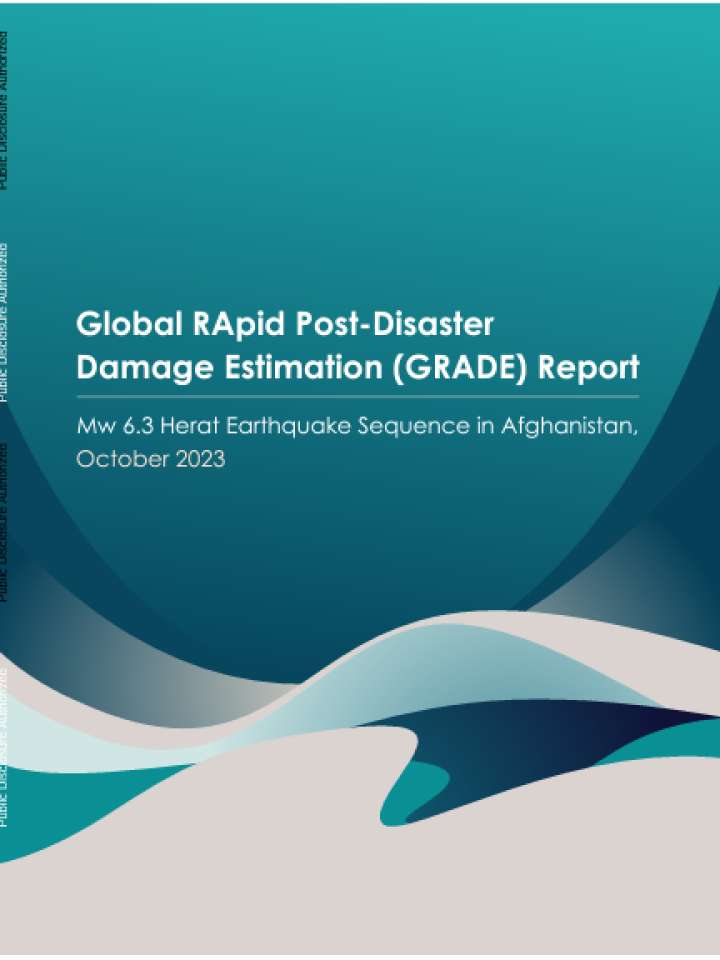Global Rapid Post-Disaster Damage Estimation (GRADE) report: Mw 6.3 Herat Earthquake Sequence in Afghanistan, October 2023
The objective of the assessment is to develop a 2 model-based estimate of the direct physical (economic) damages to residential buildings (houses), nonresidential buildings (e.g., education, health, worship, commercial, industrial assets) and infrastructure (e.g., transport, power, water, telecommunications), and to evaluate the spatial distribution of damages in order to support the development of a roadmap for recovery and reconstruction. This report summarizes the key findings of the assessment. Impacts of concurrent or secondary hazards such as landslides were small and thus not evaluated in this report.
The GRADE assessment shows that the median estimated damages calculated for both residential and non-residential building stock are nearly equal, each amounting to approximately US$125 million. Following closely are damages to infrastructure and agriculture, which totaled US$64.4 million. A high level of vulnerability of the residential building stock was also observed, with very high damage ratios for 3 residential buildings (highest ratio in Zindajan at 37.9%). In contrast, the damage ratio for nonresidential buildings is notably lower due to better construction quality (13.7% in Zindajan). Similarly, estimated damages to infrastructure are also lower and reach approximately 9.5% of the baseline infrastructure exposure in the Zindajan district

